- 全部删除
 您的购物车当前为空
您的购物车当前为空
TLR4 Protein, Human, Recombinant (His)
TLR4, also known as TLR-4, is a member of the Toll-like receptor (TLR) family, which plays a fundamental role in pathogen recognition and activation of innate immunity. TLRs are highly conserved from Drosophila to humans and share structural and functional similarities. They recognize pathogen-associated molecular patterns (PAMPs) that are expressed on infectious agents, and mediate the production of cytokines necessary for the development of effective immunity. TLR4 is most abundantly expressed in placenta, and in myelomonocytic subpopulation of the leukocytes. TLR 4 has also been designated as CD284 (cluster of differentiation 284). It has been implicated in signal transduction events induced by lipopolysaccharide (LPS) found in most gram-negative bacteria. TLR4 Cooperates with LY96 and CD14 to mediate the innate immune response to bacterial lipopolysaccharide (LPS). It acts via MYD88, TIRAP and TRAF6, leading to NF-kappa-B activation, cytokine secretion and the inflammatory response. It is also involved in LPS-independent inflammatory responses triggered by Ni(2+).
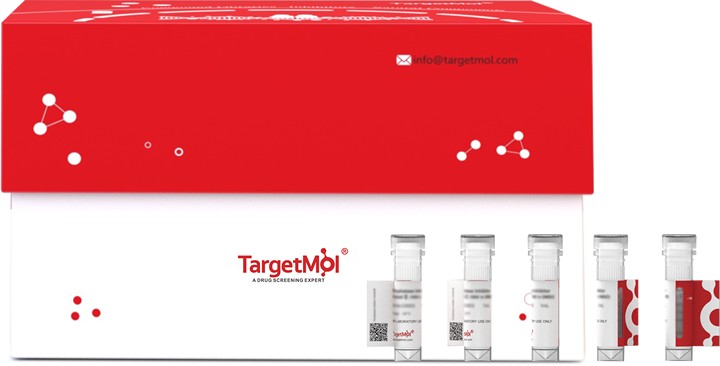
TLR4 Protein, Human, Recombinant (His)
一键复制产品信息| 规格 | 价格 | 库存 | 数量 |
|---|---|---|---|
| 5 μg | ¥ 429 | 6-8日内发货 | |
| 10 μg | ¥ 697 | 6-8日内发货 | |
| 20 μg | ¥ 1,150 | 5日内发货 | |
| 50 μg | ¥ 2,260 | 5日内发货 | |
| 100 μg | ¥ 3,820 | In stock | |
| 200 μg | ¥ 6,680 | 5日内发货 | |
| 500 μg | ¥ 13,900 | 5日内发货 | |
| 1 mg | ¥ 24,900 | 5日内发货 |
产品信息
| 生物活性 | 1.Immobilized TLR4 Protein, Human, Recombinant (His) at 1 μg/mL (100 μL/well) on His Tag Antibody, Mouse MAb precoated (5 μg/mL, 100 μL/well) can bind Anti-TLR4 Antibody, the EC50 is 4-15 ng/mL (QC tested).
2.Immobilized Anti-TLR4 Antibody at 2 μg/mL (100 μL/well) can bind TLR4 Protein, Human, Recombinant (His), the EC50 is 4-15 ng/mL (Routinely tested). |
| 产品描述 | TLR4, also known as TLR-4, is a member of the Toll-like receptor (TLR) family, which plays a fundamental role in pathogen recognition and activation of innate immunity. TLRs are highly conserved from Drosophila to humans and share structural and functional similarities. They recognize pathogen-associated molecular patterns (PAMPs) that are expressed on infectious agents, and mediate the production of cytokines necessary for the development of effective immunity. TLR4 is most abundantly expressed in placenta, and in myelomonocytic subpopulation of the leukocytes. TLR 4 has also been designated as CD284 (cluster of differentiation 284). It has been implicated in signal transduction events induced by lipopolysaccharide (LPS) found in most gram-negative bacteria. TLR4 Cooperates with LY96 and CD14 to mediate the innate immune response to bacterial lipopolysaccharide (LPS). It acts via MYD88, TIRAP and TRAF6, leading to NF-kappa-B activation, cytokine secretion and the inflammatory response. It is also involved in LPS-independent inflammatory responses triggered by Ni(2+). |
| 种属 | Human |
| 表达系统 | Baculovirus Insect Cells |
| 标签 | C-His |
| 蛋白编号 | O00206-1 |
| 别名 | toll-like receptor 4,TOLL,TLR-4,TLR4,CD284,ARMD10 |
| 蛋白构建 | A DNA sequence encoding the human TLR4 (Met1-Lys631) (O00206-1) was expressed with a C-terminal polyhistidine tag. Predicted N terminal: Glu 24 |
| 蛋白纯度 | ≥ 87 % as determined by SDS-PAGE. ≥ 90 % as determined by SEC-HPLC. 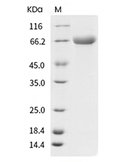 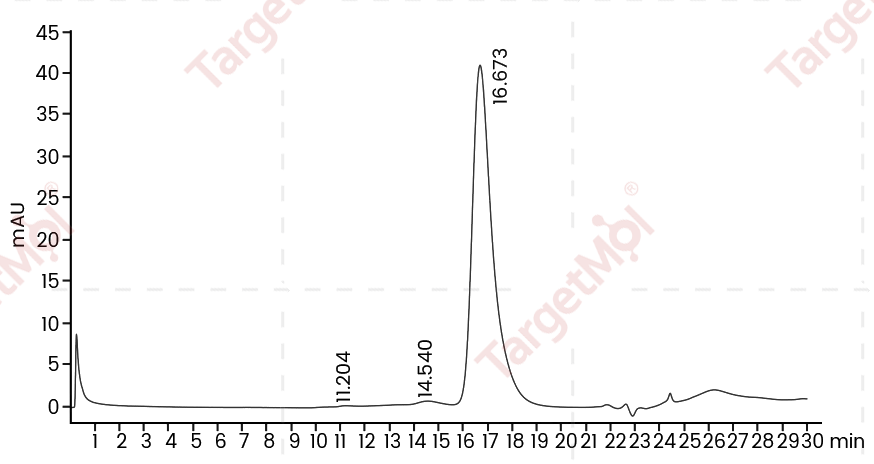 |
| 分子量 | 70.5 kDa (predicted); 68 kDa (reducing condition, due to glycosylation) |
| 内毒素 | < 1.0 EU/μg of the protein as determined by the LAL method. |
| 蛋白性状 | Lyophilized powder or solution |
| 缓冲液 | Lyophilized from a solution filtered through a 0.22 μm filter, containing 20 mM PB, 500 mM NaCl, pH 6. 0, 10% glycerol or Supplied as sterile 20 mM PB, 500 mM NaCl, 10% Glycerol, pH 6. Typically, a mixture containing 5% to 8% trehalose, mannitol, and 0.01% Tween 80 is incorporated as a protective agent before lyophilization. |
| 复溶方法 | A Certificate of Analysis (CoA) containing reconstitution instructions is included with the products. Please refer to the CoA for detailed information. |
| 存储 | It is recommended to store recombinant proteins at -20°C to -80°C for future use. Lyophilized powders can be stably stored for over 12 months, while liquid products can be stored for 6-12 months at -80°C. For reconstituted protein solutions, the solution can be stored at -20°C to -80°C for at least 3 months. Please avoid multiple freeze-thaw cycles and store products in aliquots. |
| 运输方式 | In general, Lyophilized powders are shipping with blue ice. |
| 研究背景 | TLR4, also known as TLR-4, is a member of the Toll-like receptor (TLR) family, which plays a fundamental role in pathogen recognition and activation of innate immunity. TLRs are highly conserved from Drosophila to humans and share structural and functional similarities. They recognize pathogen-associated molecular patterns (PAMPs) that are expressed on infectious agents, and mediate the production of cytokines necessary for the development of effective immunity. TLR4 is most abundantly expressed in placenta, and in myelomonocytic subpopulation of the leukocytes. TLR 4 has also been designated as CD284 (cluster of differentiation 284). It has been implicated in signal transduction events induced by lipopolysaccharide (LPS) found in most gram-negative bacteria. TLR4 Cooperates with LY96 and CD14 to mediate the innate immune response to bacterial lipopolysaccharide (LPS). It acts via MYD88, TIRAP and TRAF6, leading to NF-kappa-B activation, cytokine secretion and the inflammatory response. It is also involved in LPS-independent inflammatory responses triggered by Ni(2+). |










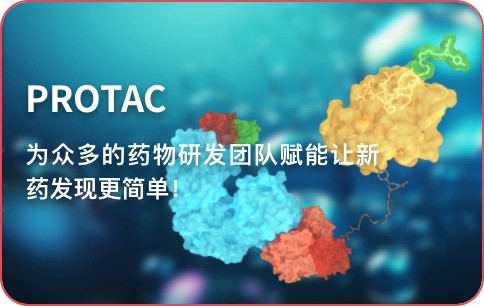





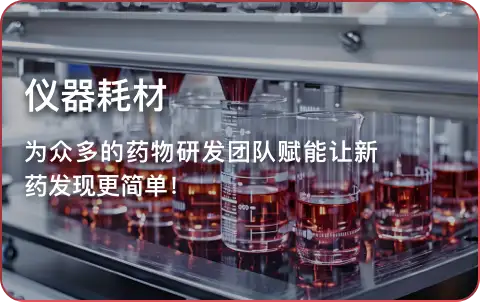
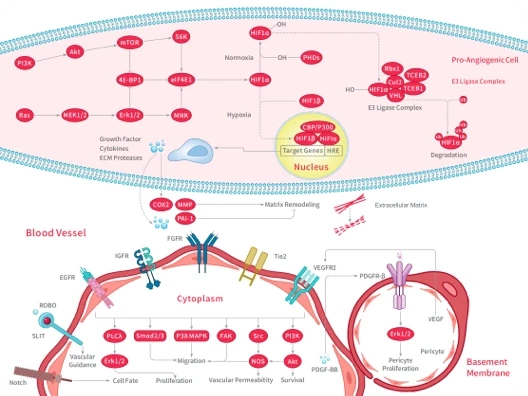
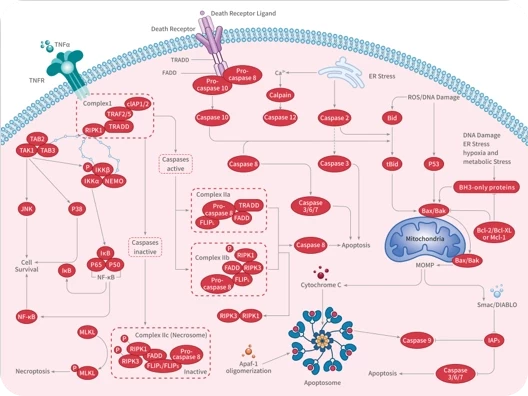
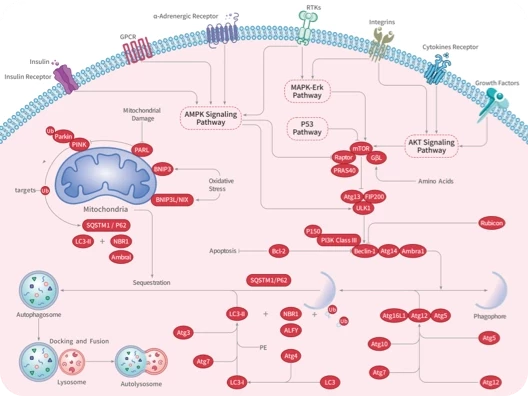


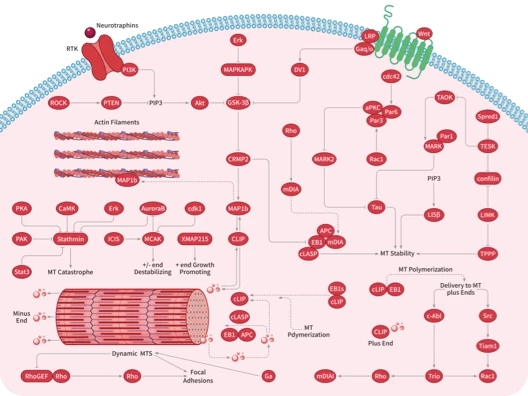
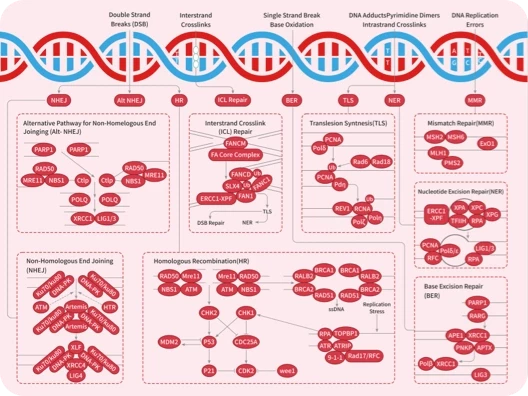

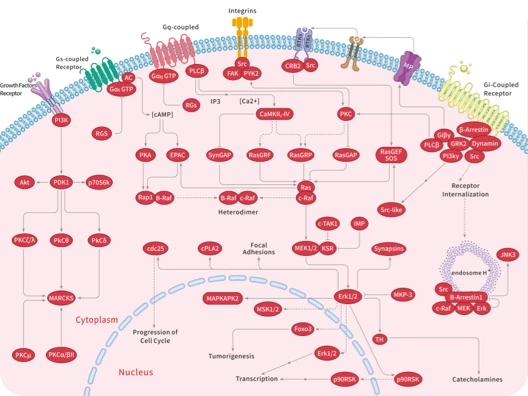
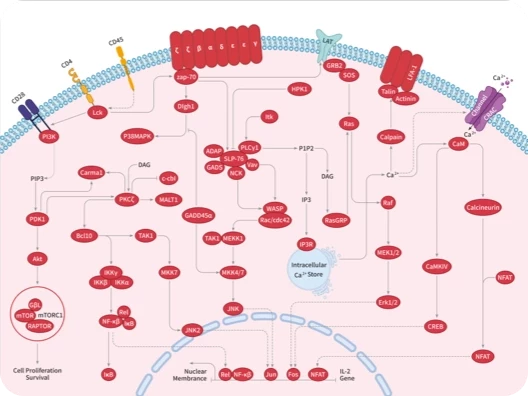
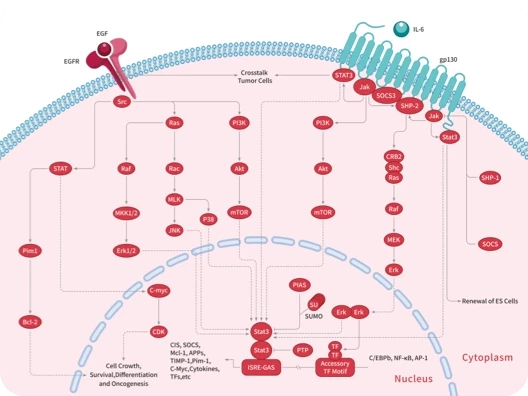
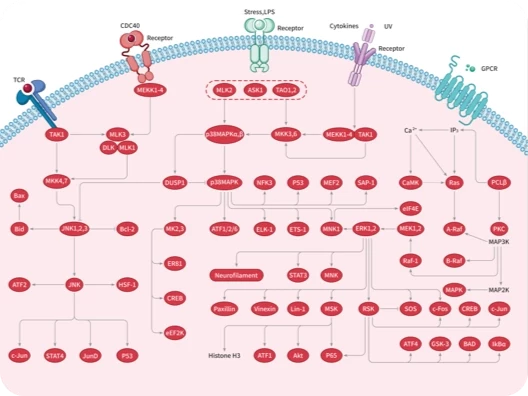


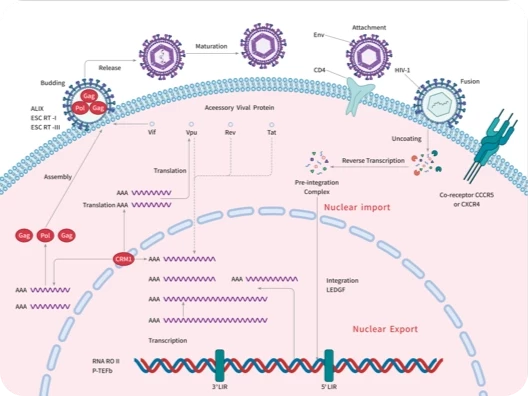

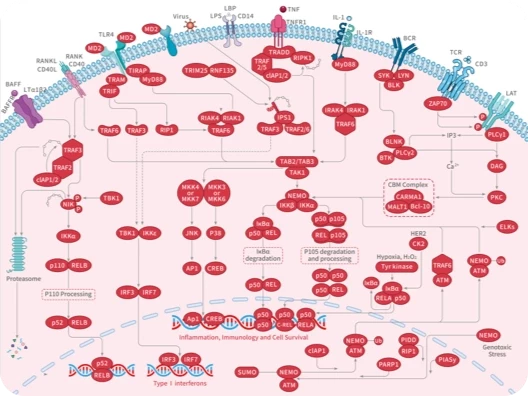
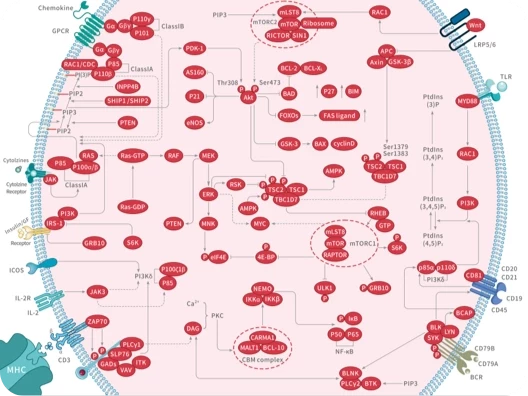
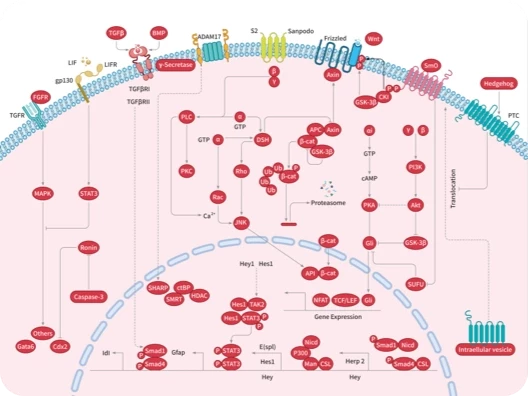

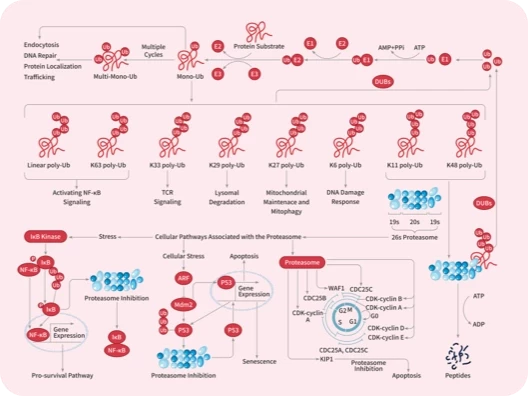


 |
|